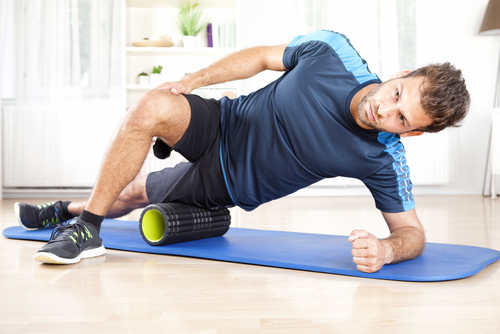Running is a common exercise across the U.S., and it seems like no matter where you go you’ll see someone jogging. While running can be beneficial for your health, it can also be the source of many types of injuries to the feet, knees, hips and lower back. One goal that running physical therapy has is to help people prevent and recover from running injuries. An example of a therapy technique that can help prevent many running injuries is foam rolling.
What is foam rolling?
Foam rolling is a type of myofascial release that is self-performed, and it’s often used in running physical therapy. It uses a foam cylinder to apply direct pressure to tight muscles and other soft tissue. This technique has become popular recently, and more and more people are using it as a pre- and post-workout stretching technique. However, it started out as a physical therapy method that was designed to target trigger points.
What are trigger points?
Trigger points are knots in the muscles and soft tissue, and they can build up over time thanks to overtraining and repetitive movements. Trigger points tend to cause pain that radiates into areas of the body located nearby, and they can feel tender when touched. They are also a primary target of running physical therapy, and one area of the body where runners often develop trigger points is the iliotibial (IT) band.
This band of stretchy connective tissue starts at the top rear of the pelvis, and it then runs over the top of the thigh and attaches near the outside of the knee. Since it’s responsible for bending the knee, the IT band is placed under a lot of stress when you run. Poor running form or overtraining can increase this stress even more, and these problems can lead to trigger points.
How does foam rolling help treat trigger points?
The way foam rolling helps treat trigger points is by allowing you to apply deep pressure directly to the trigger point. This running physical therapy technique uses the force of gravity and your body weight to supply the pressure, and the roller itself can be moved around to apply pressure to specific trigger points in the legs, hips and buttocks.
Let’s go back to the example of an IT band trigger point. To break up this trigger point, physical therapists can show you foam roller movements that target this area. For instance, they may have you lie on your side with the roller just above your hip. Then, they’ll have you move your body so that the roller travels over the hip to target the top of the IT band. Next, you’ll be asked to roll over on your belly with the foam roller at the top of your thigh. From here, your therapist will have you move backward and forward so the roller applies pressure to the front of the thigh.
Find out more about running physical therapy at SOL Physical Therapy
Foam rolling is helpful for reducing trigger points, and it can also help keep muscles supple and properly hydrated. However, this isn’t the only technique that can be helpful in your running physical therapy. At SOL Physical Therapy, we can design a multilayered therapy program for you, and this plan can include therapy techniques such as:
- Foam rolling
- Graston Technique®
- Kinesiotherapy
Take the next step to get our help with your running-related injuries. Contact our team today for more information or to schedule an initial appointment.

